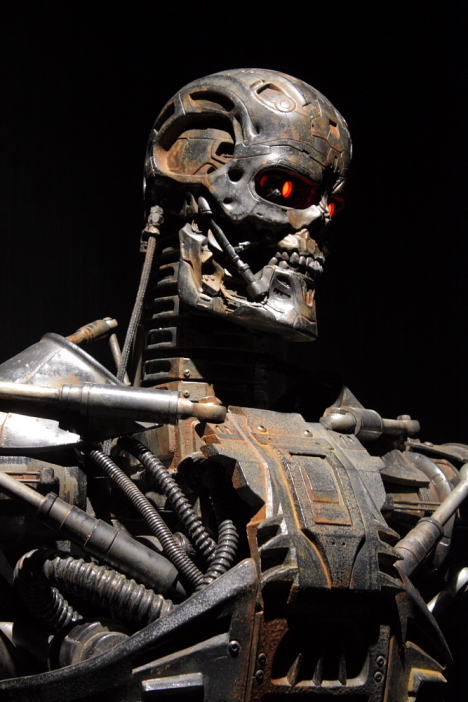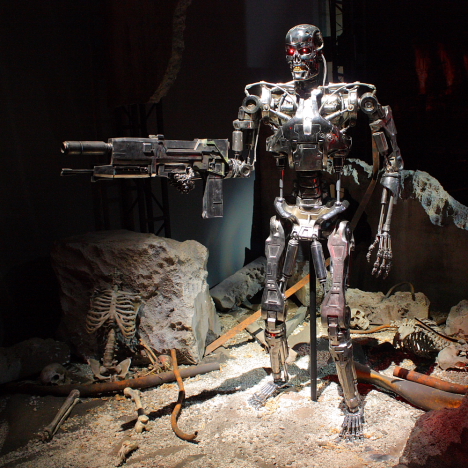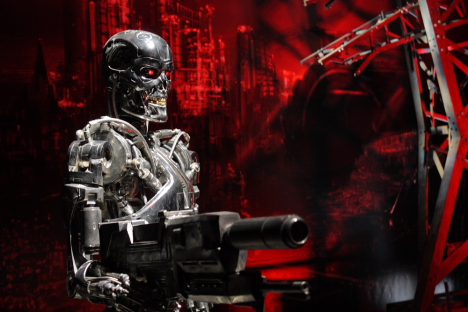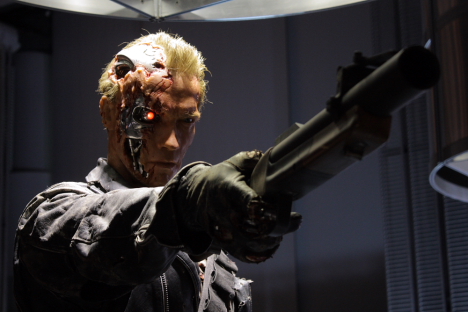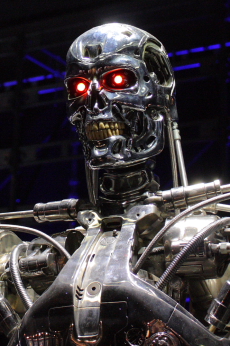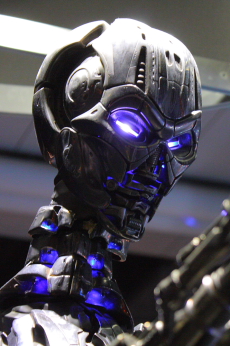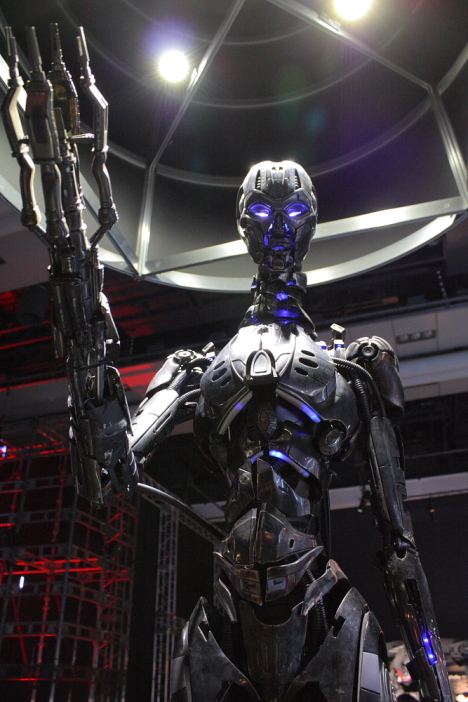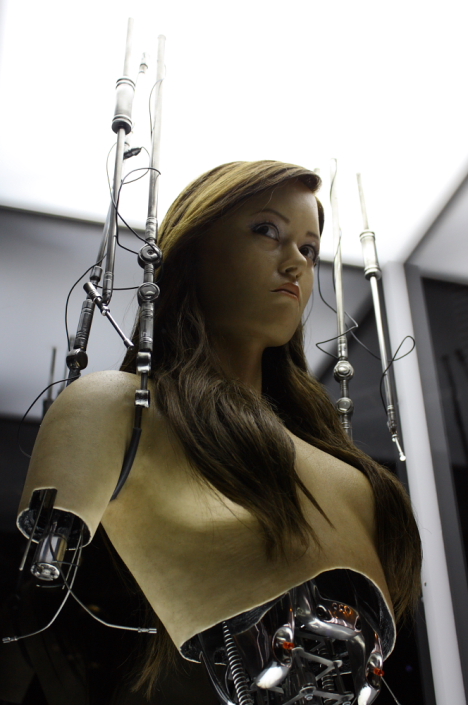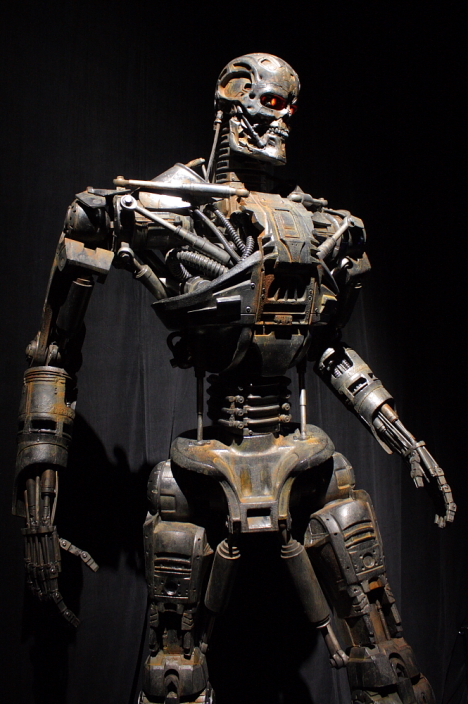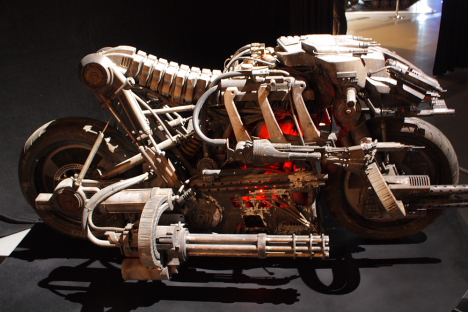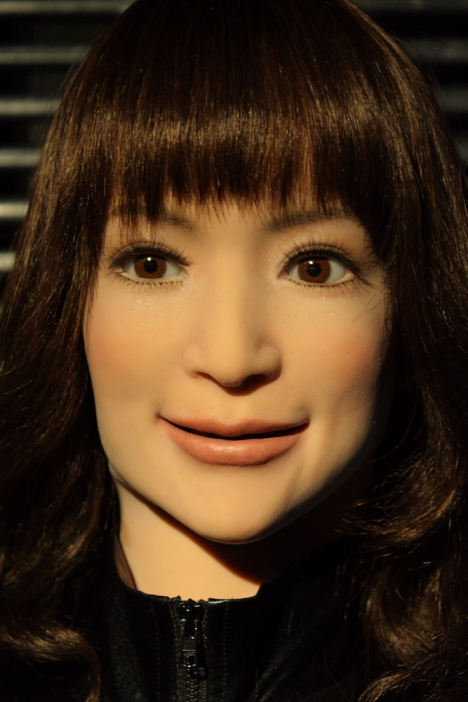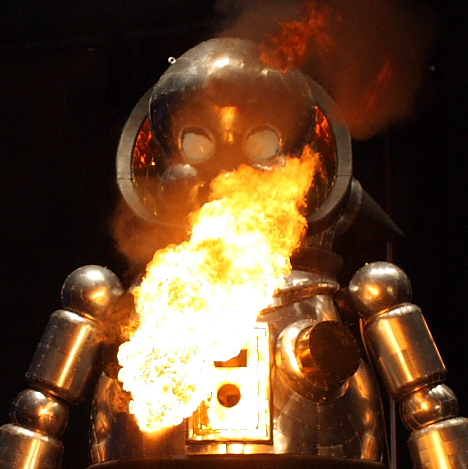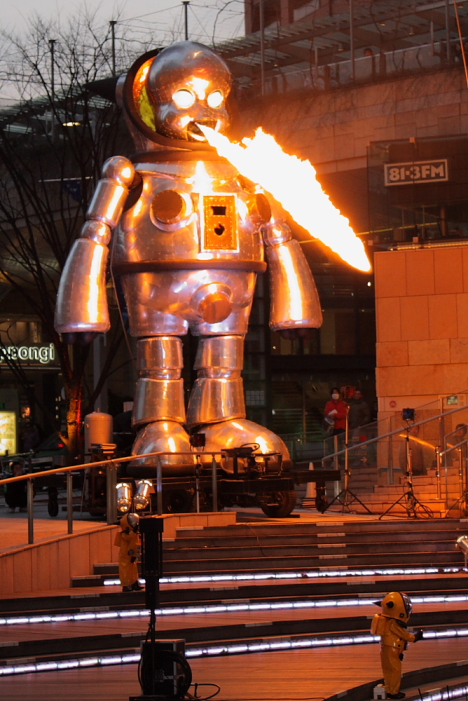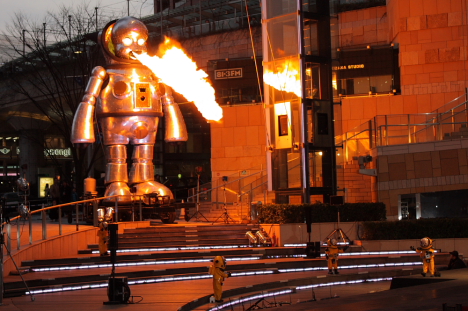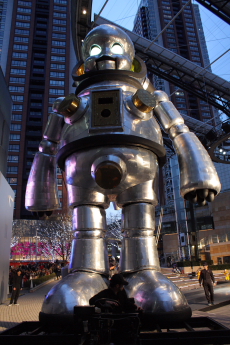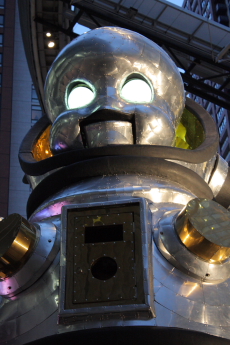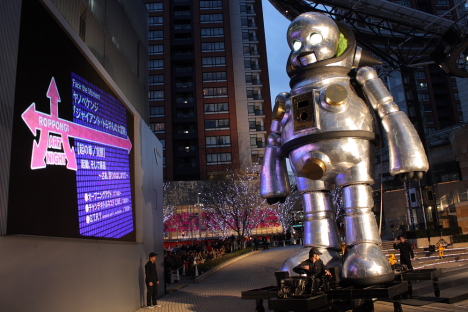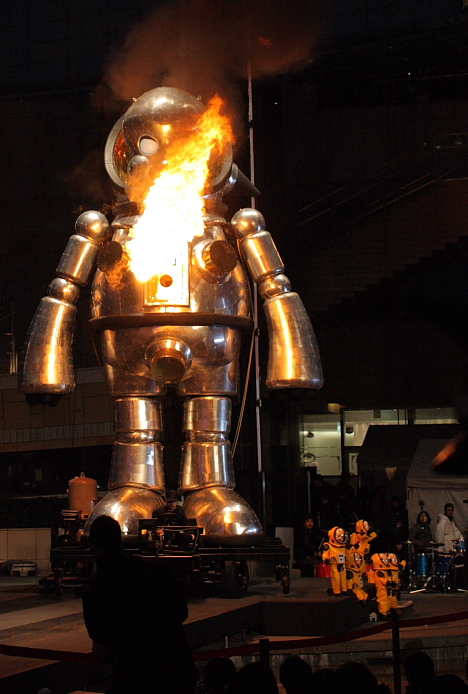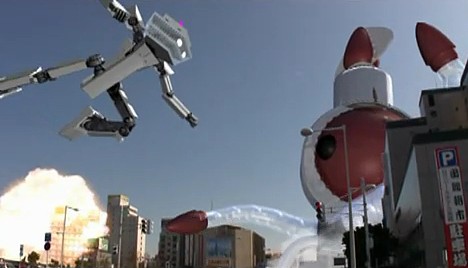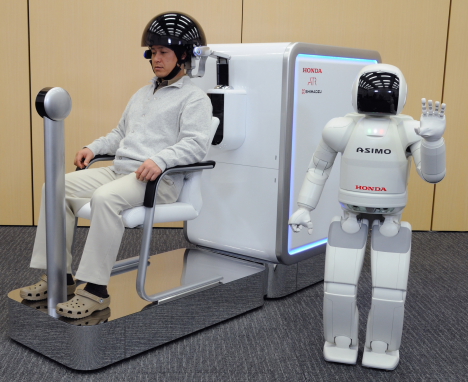
Honda has developed new brain-machine interface (BMI) technology that allows humans to control the Asimo humanoid robot simply by thinking certain thoughts.
The BMI system, which Honda developed along with Advanced Telecommunications Research Institute International (ATR) and Shimadzu Corporation, consists of a sensor-laden helmet that measures the user's brain activity and a computer that analyzes the thought patterns and relays them as wireless commands to the robot. (Watch video.)
When the user simply thinks about moving his or her right hand, the pre-programmed Asimo responds several seconds later by raising its right arm. Likewise, Asimo lifts its left arm when the person thinks about moving their left hand, it begins to walk when the person thinks about moving their legs, and it holds its hand up in front of its mouth when the person thinks about moving their tongue.
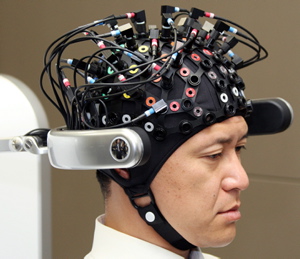 The high-precision BMI technology relies on three different types of brain activity measurements. EEG (electroencephalography) sensors measure the slight fluctuations in electrical potential on the scalp that occur when thinking, while NIRS (near-infrared spectroscopy) sensors measure changes in cerebral blood flow. Newly developed information extraction technology is used to process the complex data from these two types of sensors, resulting in a more accurate reading. The system reportedly has an accuracy rate of more than 90%.
The high-precision BMI technology relies on three different types of brain activity measurements. EEG (electroencephalography) sensors measure the slight fluctuations in electrical potential on the scalp that occur when thinking, while NIRS (near-infrared spectroscopy) sensors measure changes in cerebral blood flow. Newly developed information extraction technology is used to process the complex data from these two types of sensors, resulting in a more accurate reading. The system reportedly has an accuracy rate of more than 90%.
The use of EEG and NIRS sensors makes the new system more compact than previous BMI systems that rely on bulkier fMRI (functional magnetic resonance imaging) technology. Although the system is small enough to be transported from place to place, the developers plan to further reduce the size.
Honda, which has been conducting BMI research and development with ATR since 2005, is looking into the possibility of one day using this type of interface technology with artificial intelligence and robotics to create devices that users can operate without having to move.
[Source: Honda press release]

